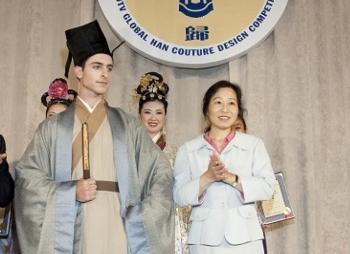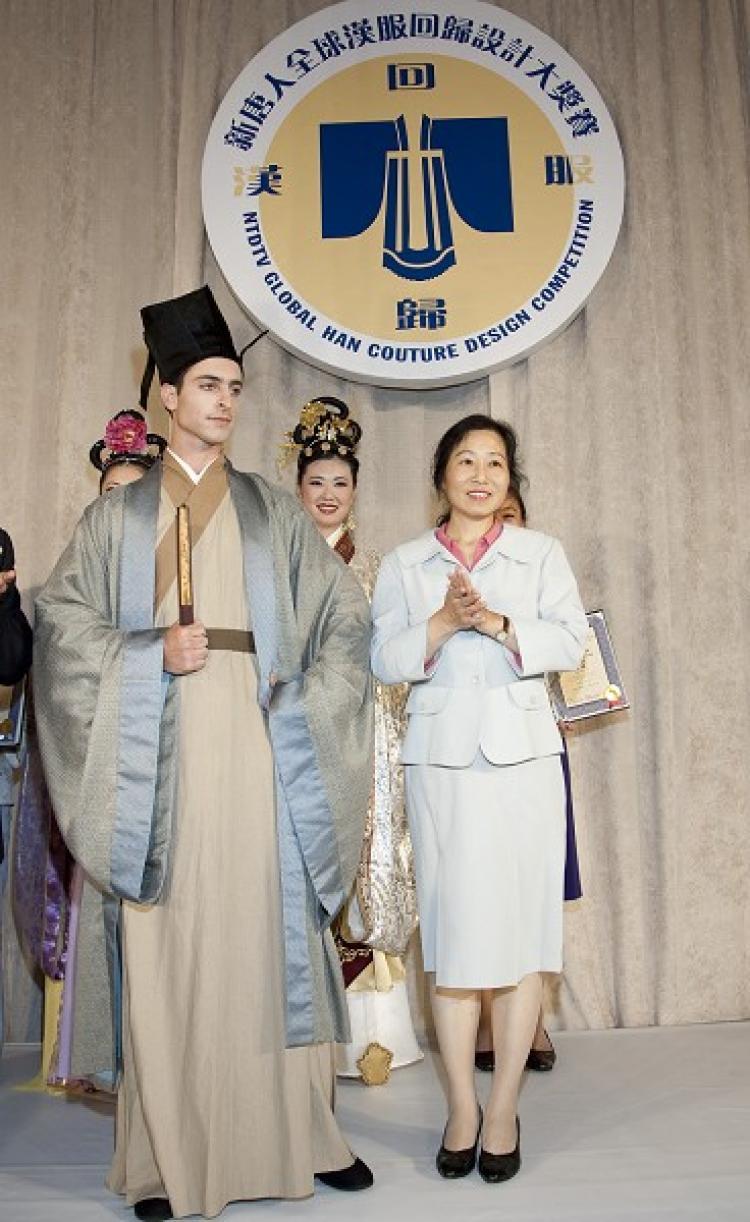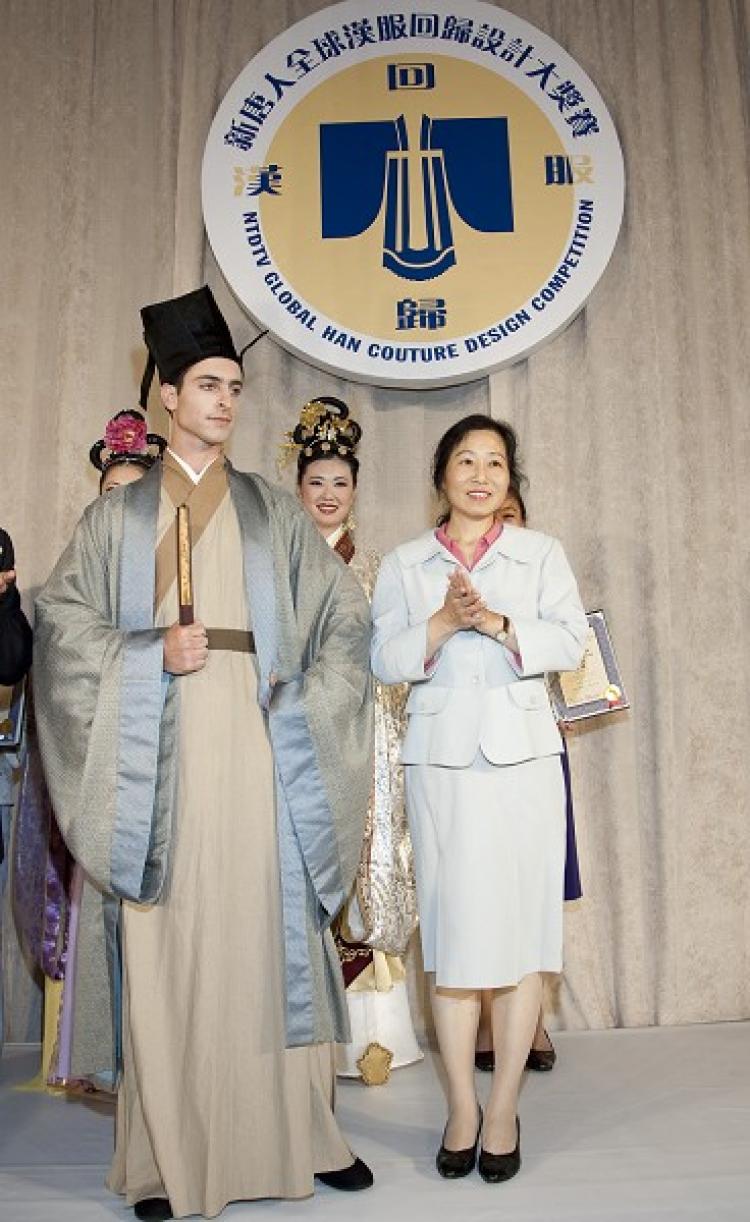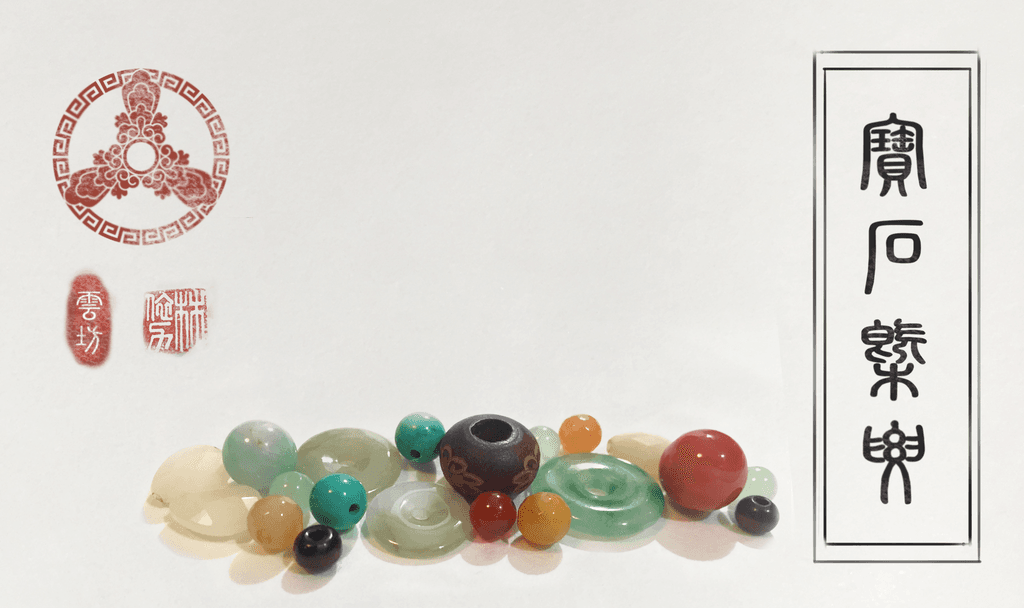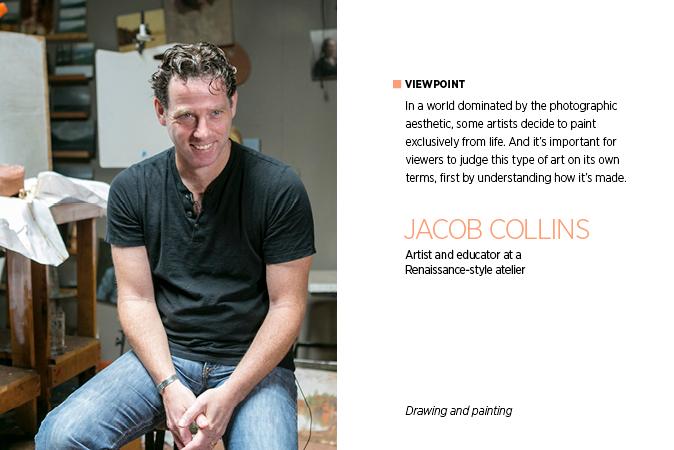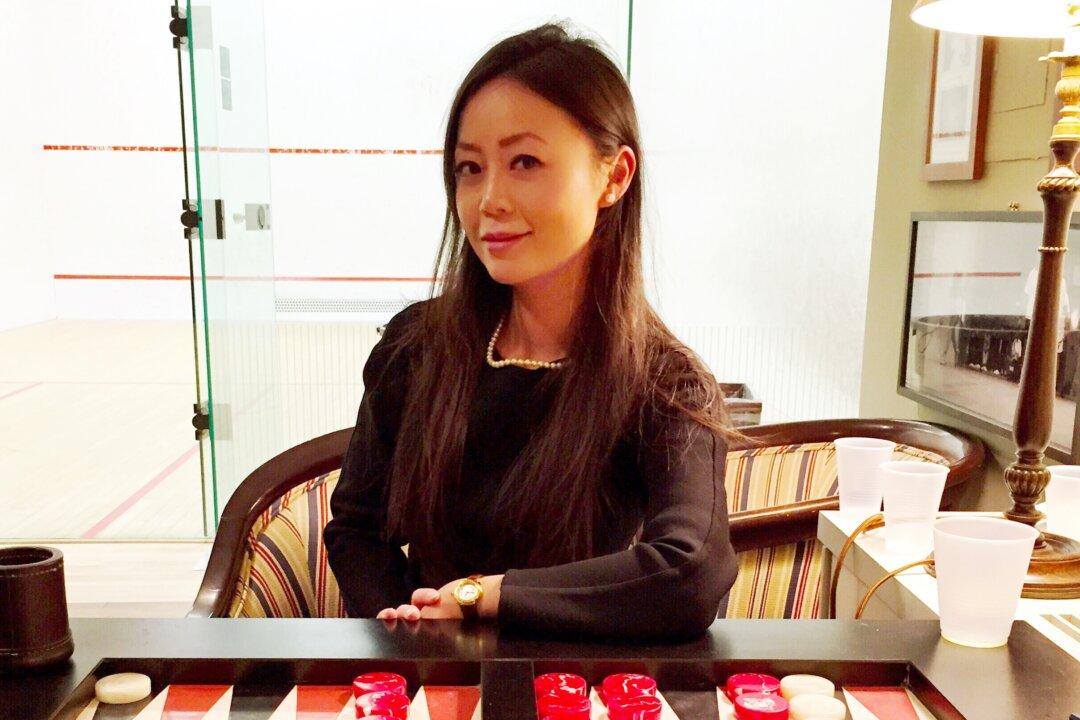NEW YORK—Twice a contestant in the NTDTV Global Han Couture Design Competition, Cheng Minghua from San Francisco has learned one important lesson. “I learned to simplify my heart, because to make the ancients’ clothing, you have to learn the ancients’ way of life,” she said.
“Ancients, whether they were rich or poor, had very simple lives and simple thoughts. Modern people often admire that way of life.”
To put together her three menswear entries for this year, she did extensive research on ancient paintings and books in which clothes making was documented.
Cheng is one of the few contestants who entered exclusively menswear this year, taking the hint from the near-complete lack of menswear entries last year. It was just as well, Cheng said, because her university major is in menswear design.
Her entries were one outfit in the Tang Dynasty (618–907) style and two in the Ming Dynasty (1368–1644) style. The two Ming outfits were for a nobleman and a scholar each, and the Tang outfit was done in the style of an ordinary man.
The outfits come in rich but subdued earth tones: deep indigos and heather grays. True to the old way of clothes making, there were no zippers, no velcro—only ties.
All three ensembles were made of a 50 percent hemp and 50 percent cotton blend, for no other reason than that Cheng couldn’t get her hands on proper silk from San Francisco. “If I could, I would have,” she said. “Well, there’s some silk, but what I could find was very clichéd.” She’s talking about the silver-on-red cherry blossom brocade that nearly every Chinatown qipao is made out of.
The effect that she achieved instead with the hemp-cotton blend had a breathable and accessible feel. Each piece was fully lined to impart the stiffness necessary for menswear.
“What I wanted to get across [through the clothing] were the principles of integrity, virtue, and trust,” she said. “In the past, when a scholar wanted to write something, what’s on his mind is not trying to make himself sound knowledgeable, but to get his ideas out, and pass it to posterity.”
“Ancients, whether they were rich or poor, had very simple lives and simple thoughts. Modern people often admire that way of life.”
To put together her three menswear entries for this year, she did extensive research on ancient paintings and books in which clothes making was documented.
Cheng is one of the few contestants who entered exclusively menswear this year, taking the hint from the near-complete lack of menswear entries last year. It was just as well, Cheng said, because her university major is in menswear design.
Her entries were one outfit in the Tang Dynasty (618–907) style and two in the Ming Dynasty (1368–1644) style. The two Ming outfits were for a nobleman and a scholar each, and the Tang outfit was done in the style of an ordinary man.
The outfits come in rich but subdued earth tones: deep indigos and heather grays. True to the old way of clothes making, there were no zippers, no velcro—only ties.
All three ensembles were made of a 50 percent hemp and 50 percent cotton blend, for no other reason than that Cheng couldn’t get her hands on proper silk from San Francisco. “If I could, I would have,” she said. “Well, there’s some silk, but what I could find was very clichéd.” She’s talking about the silver-on-red cherry blossom brocade that nearly every Chinatown qipao is made out of.
The effect that she achieved instead with the hemp-cotton blend had a breathable and accessible feel. Each piece was fully lined to impart the stiffness necessary for menswear.
“What I wanted to get across [through the clothing] were the principles of integrity, virtue, and trust,” she said. “In the past, when a scholar wanted to write something, what’s on his mind is not trying to make himself sound knowledgeable, but to get his ideas out, and pass it to posterity.”
